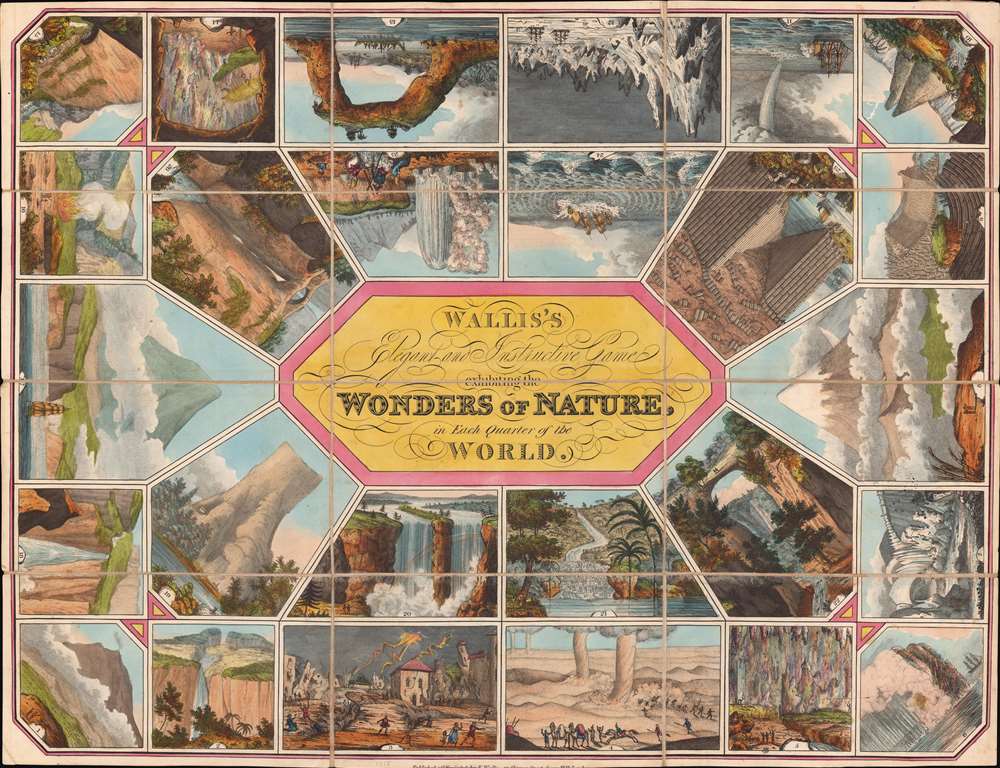1818 Wallis Game Map of the World: Wonders of Nature
WondersNatureGame-wallis-1818
Title
1818 (dated) 18.625 x 24.375 in (47.3075 x 61.9125 cm)
Description
The Jeux de l'Oie
The jeux de l'oie or game of the goose, originated in Italy during the late 16th century. The game follows a traditional spiral form with most games consisting of sixty-three squares (although there are exceptions). Players progress along the spiral to the center of the board. Along the way, players encounter hazards, bonuses, and penalties. As explained by game historian Adrian SevilleEach game goes beyond simple cartographic representation to convey, through its rules or iconography, a deliberate 'message' whether political, commercial, or cultural. The games give insights into international relationships, perceptions, and misconceptions at various points in the history of Europe. (Seville, A., The geographical Jeux de l'Oie of Europe, BELGEO, 2008, 3-4)
Publication History and Census
This game was created and published by Edward Wallis in 1818. We note fourteen examples cataloged in OCLC, including holdings at Columbia University, Yale, Harvard, Princeton, the Huntington Library, and the University of Cambridge.Cartographer
Edward Wallis (1787 - 1868) was a British publisher, mapmaker, and game manufacturer. The son of publisher John Wallis (1745 - 1818), Wallis joined his father's business in 1813, operating as Wallis and Son or John and Edward Wallis. Wallis and his brother John divided their father's business after his 1818 death. Edward continued creating, publishing, and selling maps, games, and other printed material until he also retired in 1847, at which point he sold his business to John Passmore. His brother, John Wallis II, established a separate publishing business, which he ran for a few years before closing down and moving to Sidmouth, where he opened the Marine Library, a circulating library and reading room. More by this mapmaker...

